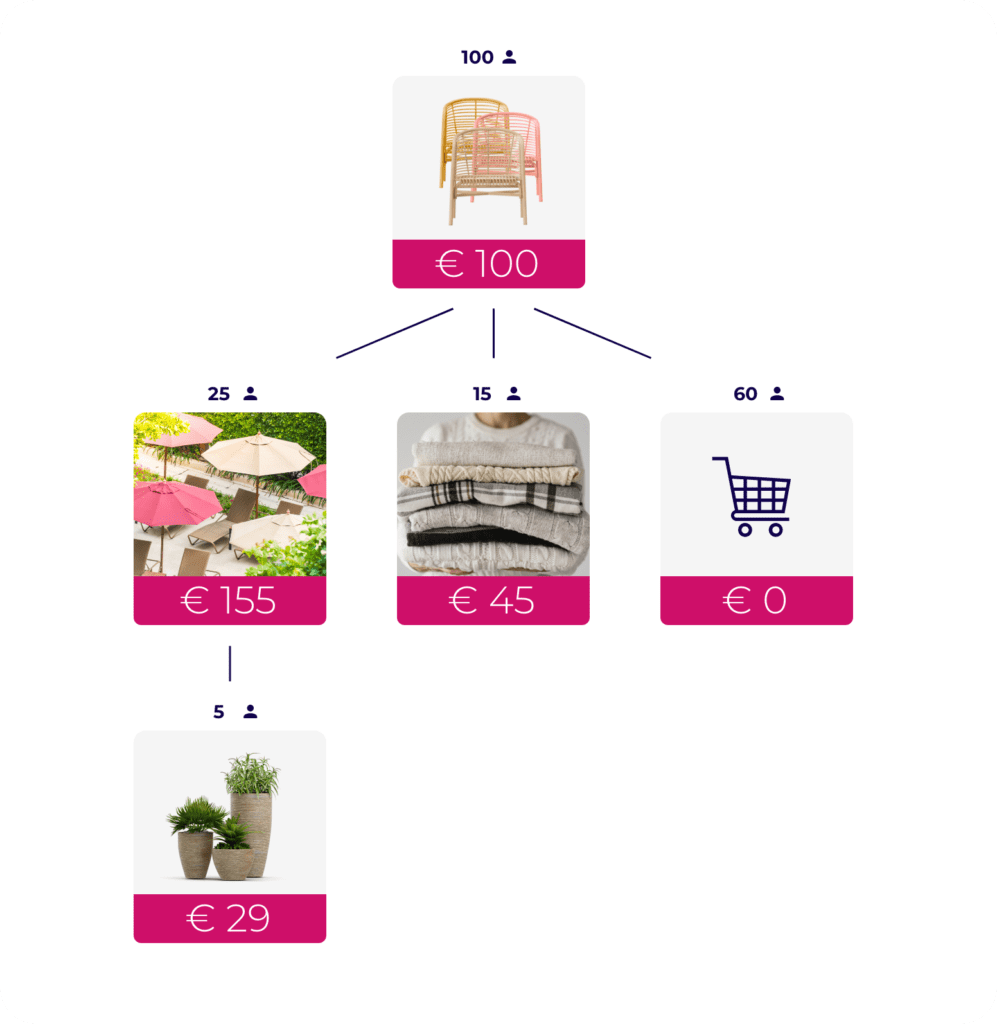What is Product Lifetime Value?
With the new possibilities of our Product Intelligence engine, we have identified a new trend figure driven by product-centric data analysis, that can help you understand your products better and improve your personalization strategies.
The Product Lifetime Value (PLTV) gives you a view of what additional revenue a product can bring after being purchased on your online store. The value is calculated from the prices of all those additional products later acquired by the same buyer. PLTV is a practical application of Hello Retail’s proprietary AI engine, which employs advanced clustering techniques and identifies product correlations.
A short background on Clustering
Hello Retail has developed a unique, proprietary technology that can identify groups of similar products, and built common, global profiles which we call Product Clusters. This process is run by our Product Intelligence engine, which finds patterns and connections between similar products and provides applicable and relevant product-centered insights. To get an overview of Product Intelligence and how we use it, we invite you to read our article The future of eCommerce.
This is how you can use PLTV for your business
You already know which products on your site are most popular among your customers and bring the most revenue. But also knowing their PLTV, you can tell which products can continue to bring extra value after they have already been purchased. If the PLTV is high, it means that the customers will most likely return to your store for more.
You can use this tool to better allocate your marketing and advertising resources by prioritizing those products that make more than the number on their price tag.
PLTV can also indicate which products make your customers return to your store so that you can integrate this information into your retention strategy.

Lifetime Value vs. Product Lifetime Value
With PLTV, we shift the view towards product-centric behavior instead of customer-centric behavior. The Lifetime Value follows the customer’s journey, and it requires you to track customer behavior, which is not always possible. The Product Lifetime Value zooms in on the product journey to help you make strategic decisions while keeping in line with new user privacy regulations.
How it works
To understand how we come up with the numbers, we visualized a simplified product journey. It’s important to mention that the evaluated product profile is based on our product clustering techniques, which identify correlations among a vast array of products using Product Intelligence. For the example, we will look at the PLTV calculation for a cluster of similar garden chairs, and the price represents a potential average for this cluster.
Note: Please keep in mind that there are much more complex processes involved in this calculation. Still we want to invite you to dive a bit deeper into the calculation of PLTV.
Example
For a simple illustration, we suppose that our data shows 100 customers have purchased chairs from the same cluster, and 25 of the same customers have returned later and bought garden umbrellas. Also, other 15 out of the 100 buyers later bought blankets. The rest have not made any additional purchases.
Now we see that the chair purchase created some returning customers, which means an added value. To calculate this value, we add up the revenue from the price of each additional product corresponding to the share of customers that bought it.
PLTV of the chair cluster
25% * 155€ + 15% * 45€ + 0€
In this case the result would be approximately 46€.
Now let’s say 5 of the customers who purchased the umbrellas have returned later to acquire outdoor plants.
- Click image for details
The calculation is applied similarly, keeping in mind to use the percentage of 5 customers from the 25 who bought umbrellas. The same process is applied to all the subsequent items until there are no more connected purchases.
The New PLTV of the chair cluster
25% * 155€ + 15% * 45€ + 0 + 20% * 25% * 29€
Resulting in approximately 47€.
You’ll notice that we do not include the price of the chair. The PLTV does not consider the price of the evaluated product because it can significantly affect the results for expensive products, for instance. Their PLTV value would always be higher, even if they don’t generate additional revenue, which can be misleading.
Again, this calculation is fairly simplified, and all the processes that go into it are far more complex to fit into this visualization. But that’s what we are here for – to bridge the work that our data scientists do with practical insights that help you grow your business.
Want to explore the application of PLTV yourself?
Very soon, you’ll be able to explore the application of PLTV yourself, so we suggest you sign-up to our newsletter or follow us on LinkedIn to be notified.






